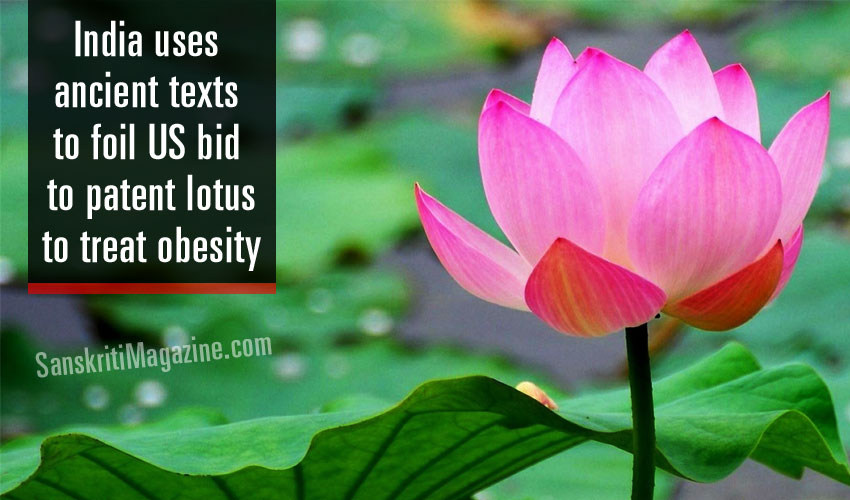The claim made by a US company on the usefulness of lotus and cowhage (a herb) for treatment of obesity and hunger at the European Patent Office (EPO) has been foiled by India, largely because of submission of prior art evidence from ancient Hindu texts that refutes the claim of novelty.
The US based company Somalab had filed a patent publication no EP2419508 at the European Patent Office (EPO) in 2010. The patent titled ‘Method for the induction of a reward response by modulation of dopaminergic systems in the central nervous system ‘ had claimed the usefulness of lotus and cowhage in the treatment of obesity and hunger control as novel. The patent was ‘deemed to have been withdrawn’ through a communication by EPO on August 13, 2014.
The Traditional Knowledge Digital Library (TKDL), a unit of Council of Scientific & Industrial Research had submitted prior art evidence in the form of references from ancient books and texts citing evidence that the plants have been used alone or in combination along with few other ingredients for the treatment for the treatment of obesity, polyphagia/excessive hunger and for satiating in the traditional Indian system of medicine.
Confirming that the patent has been deemed to have been withdrawn, an EPO spokesperson said: “The exact reason for the applicant losing interest in their patent application cannot be known for certain. It is true that evidence provided by TKDL was used by the EPO examiner in their examination report, objecting to aspects of the Somalab’s patent application and subsequently Somalab’s application was deemed withdrawn for failure to respond. They have a few weeks to react, but if we do not get a response, the application will be terminated.”
Former TKDL director VK Gupta had on his last day in office submitted all evidence which specifies that these plants were used traditionally for treatment of obesity and hunger control.
“The claims of the usefulness of a combination of plants — sacred lotus and cowhage for treatment of obesity, polyphagia/excessive hunger and for satiating when the therapeutic effects of claimed plants are already known as traditional knowledge cannot be considered as inventive,” Dr Gupta had said in his letter to EPO.
By Vanita Srivastava (HT)











